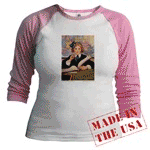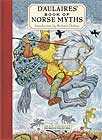| Introduction | Annotated Tales | eBooks | Bookstore | Illustration Gallery | Discussion Board | Blog |
 |
|
|
Peter Christen Asbjørnsen Popular Tales From the Norse East o' the Sun and West o' the Moon Boots Who Ate a Match With the Troll Boots Who Made the Princess Say, "That's A Story" The Giant Who Had No Heart in His Body Not a Pin to Choose Between Them One's Own Children Are Always Prettiest The Three Princesses of Whiteland The Cock, the Cuckoo, and the Blackcock The Lad Who Went to the North Wind The Husband Who Was to Mind the House The Cock and Hen That Went to the Dovrefell Asbjørnsen, Peter Christen and Moe, Jørgen. Popular Tales from the Norse, Third Edition. George Webbe Dasent, translator. Edinburgh: David Douglass, 1888. Asbjørnsen's Tales About Asbjørnsen and Moe Peter Christen Asbjørnsen (1812-1885) and Jørgen Engebretsen Moe (1813-1882) are Norway's answer to the Brothers Grimm. They were friends as teenagers but formed their literary partnership in their early twenties while still students. Both were interested in folklore at an early age through their personal experiences listening to it and their reading of the Grimms' work. When they learned each had independently started collecting folk stories, they decided to work in tandem. Asbjørnsen was a zoologist while Moe was a theologist, ultimately becoming a bishop, but their lasting contribution has been their collection and publication of Norwegian folktales. The men built upon the work of Andreas Faye, a clergyman, who published the first collection of Norwegian folktales in 1833. Asbjørnsen and Moe personally collected the tales, traveling around Norway during summer vacations and throughout the seasons, often walking on foot and visiting villages to hear the tales firsthand. In 1845, Norske Folkeeventyr (Norwegian Folk Tales), the first collection of their tales was published with immediate success in Norway. An even more successful second edition appeared in 1852 with several more editions appearing in later years. Later editions also introduced the beloved illustrations of Erik Werenskiold and Theodor Kittelsen. Some of the most popular tales from the collection are The Three Billy-Goats Gruff, The Master Maid, Soria Maria Castle, Why the Sea is Salt, and The Twelve Wild Ducks. The collection is also known simply as Asbjørnsen and Moe, especially in Norway where it is considered part of the national identity. The first English translation of Norske Folkeeventyr by George Webbe Dasent appeared in 1858 as Popular Tales of the Norse. Despite pressure to change the tales to meet English tastes and morals, he states in his notice to the first edition that "the merit of an undertaking of this kind rests entirely on its faithfulness and truth; and the man who, in such a work, wilfully changes or softens, is as guilty as he 'puts bitter for sweet, and sweet for bitter.'" Dasent added thirteen tales to the second edition of 1859 and once again explains that he did not change the content, but commands children to not read the final two tales due to adult content. The third edition of 1888 with 59 tales is available on this site at Popular Tales of the Norse. It remains one of the most accurate and complete translations of Norske Folkeeventyr available in English. It is currently in print from Dover Publications as East o' the Sun and West o' the Moon. Moe's son, Moltke Moe, continued his father's work, collaborating with Asbjørnsen when his father was too busy with his theological duties. He became the first professor of folklore and fairy tales at Christiania University. Further Reading Asbjørnsen, Peter Christen and Moe, Jørgen. Popular Tales from the Norse, Third Edition. George Webbe Dasent, translator. Edinburgh: David Douglass, 1888. Also available in reprint as: |
|
| ©Heidi
Anne Heiner, SurLaLune Fairy Tales E-mail: heidi@surlalunefairytales.com Page created 6/20/07; Last updated 10/11/07 www.surlalunefairytales.com |



